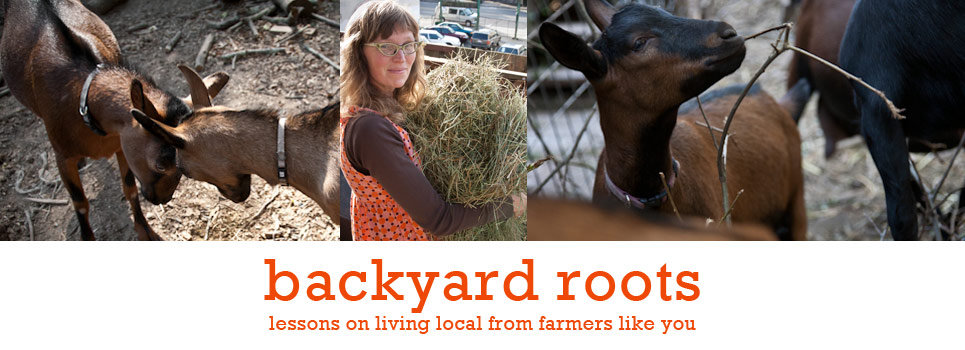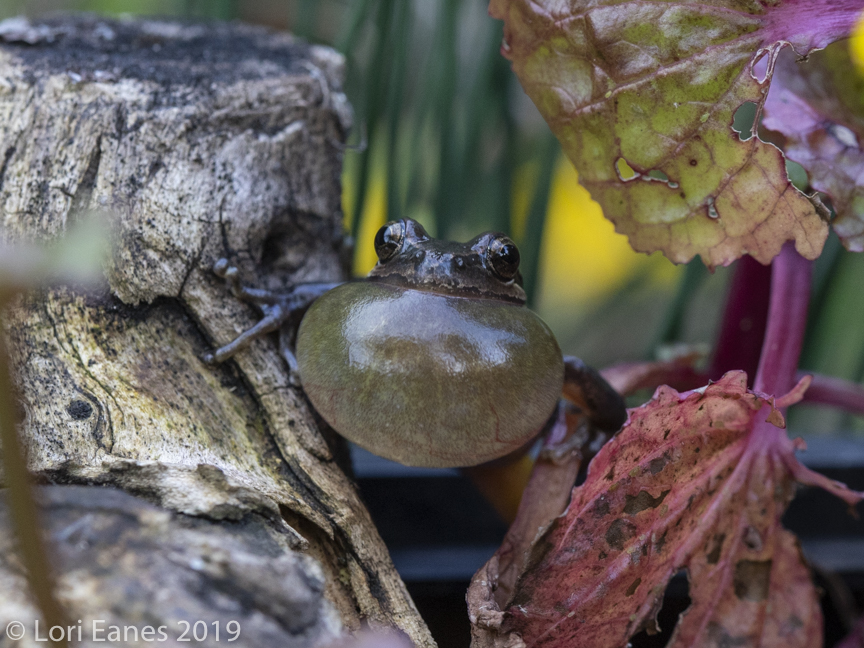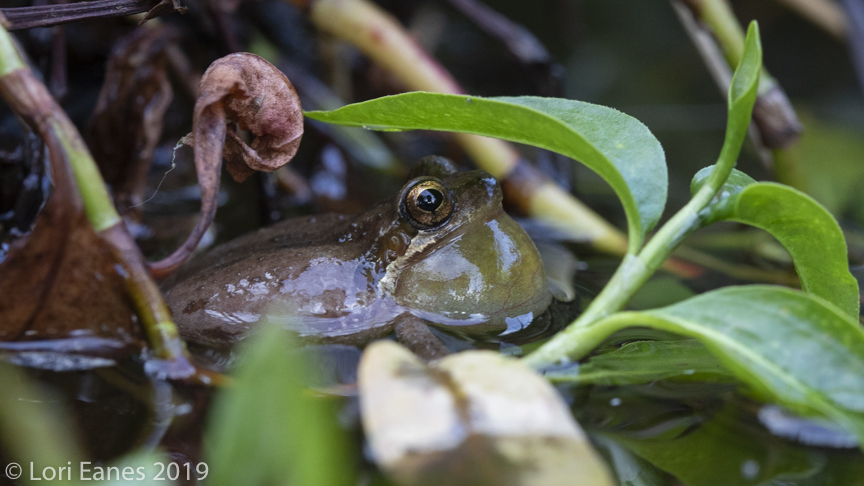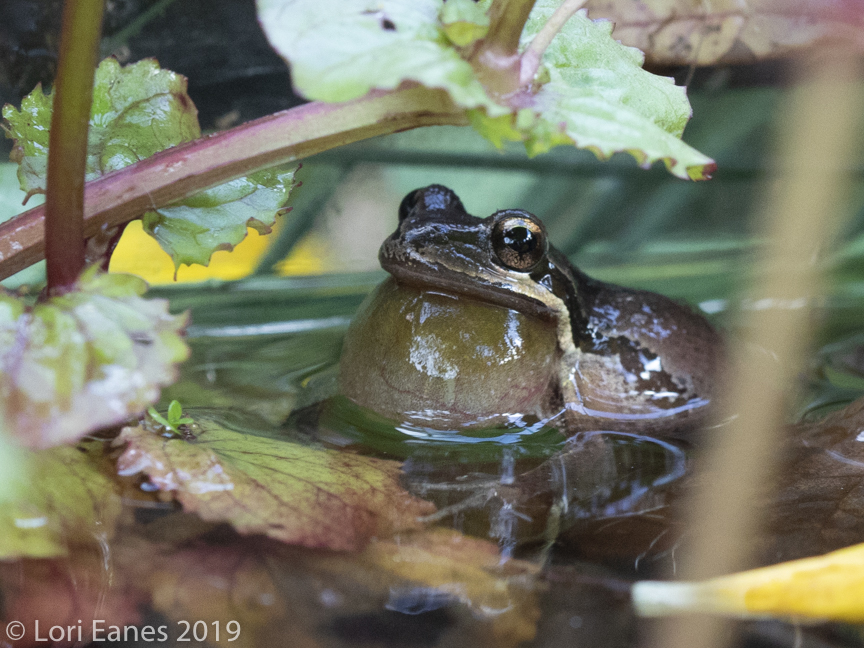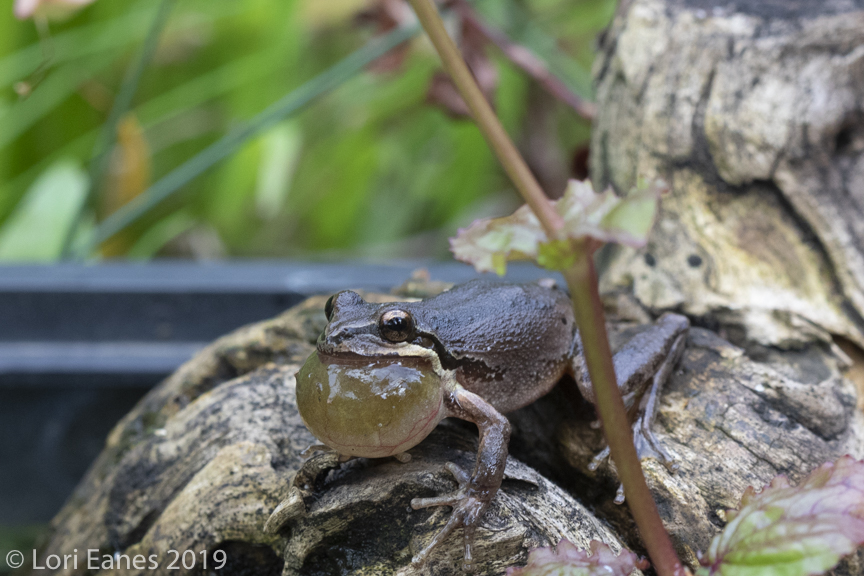 My backyard frogs are having a croakfest. It’s been a rainy winter in San Francisco and they are unusually happy. They are generally invisible when they sing, but this year they’ve been very brave. They are Pacific Chorus Frogs and they’re only 2-3 inches but you’d never know it from the racket they make.
My backyard frogs are having a croakfest. It’s been a rainy winter in San Francisco and they are unusually happy. They are generally invisible when they sing, but this year they’ve been very brave. They are Pacific Chorus Frogs and they’re only 2-3 inches but you’d never know it from the racket they make.
The croaking starts mid winter when I here random calls coming from different nearby yards where the males go off to explore. Around February they start heading back to the pond of their birth. Each male stakes out territory around the pond and they all begin calling in earnest. As soon as one starts, the others join in and if it’s warm and wet they can go on for hours. I’ve never seen them actually fight but I have seen them push each other and it’s pretty comical. The females have no trouble finding them and pretty soon eggs are laid.
I keep a large aquarium set up for them as well as the pond and after the tadpoles hatch and start to grow I cover it with wire mesh to keep them safe from the raccoons. Raccoons will eat every last tadpole if they can, so it’s important to find a way to keep them safe. Some people put up electric fences to keep them out, others cover their ponds with barriers. I recently have changed my pond from a sloping free-form plastic lined pond to a 24” deep galvanized steel livestock water trough. The straight sides keep the raccoons from wading in and I think it helps protect the tadpoles.
Every year I worry that the frogs will bother the neighbors but I’ve gotten nothing but interest and appreciation from everyone that hears them. Nature is a gift especially in the city. I try to encourage others to create native habitats, frog ponds or otherwise.
Having a backyard frog pond isn’t hard but it does take some planning and perseverance. It’s important to create a habitat with lots of hiding places and it may take several years of tadpoles before you get enough survivors to breed. I surround the pond with as many wetland native plants as I can, edging the pond with heavy pots full of natives to line the pond. I have a smaller stainless water trough filled with sedges and marsh plants to make plenty of hiding places. Some good native plants to try are Scirpus, Seep Monkey Flower, Sedges and Marsh Speedwell just to name a few. To prevent mosquitoes I use mosquito dunks. The dunks are safe for tadpoles, insects and frogs. You can’t use fish to eat the larvae, they will eat the tadpoles too.
I have several more posts on frog ponds, I recommend the links below to help you find the right plants: Las Palitas Nursery,
